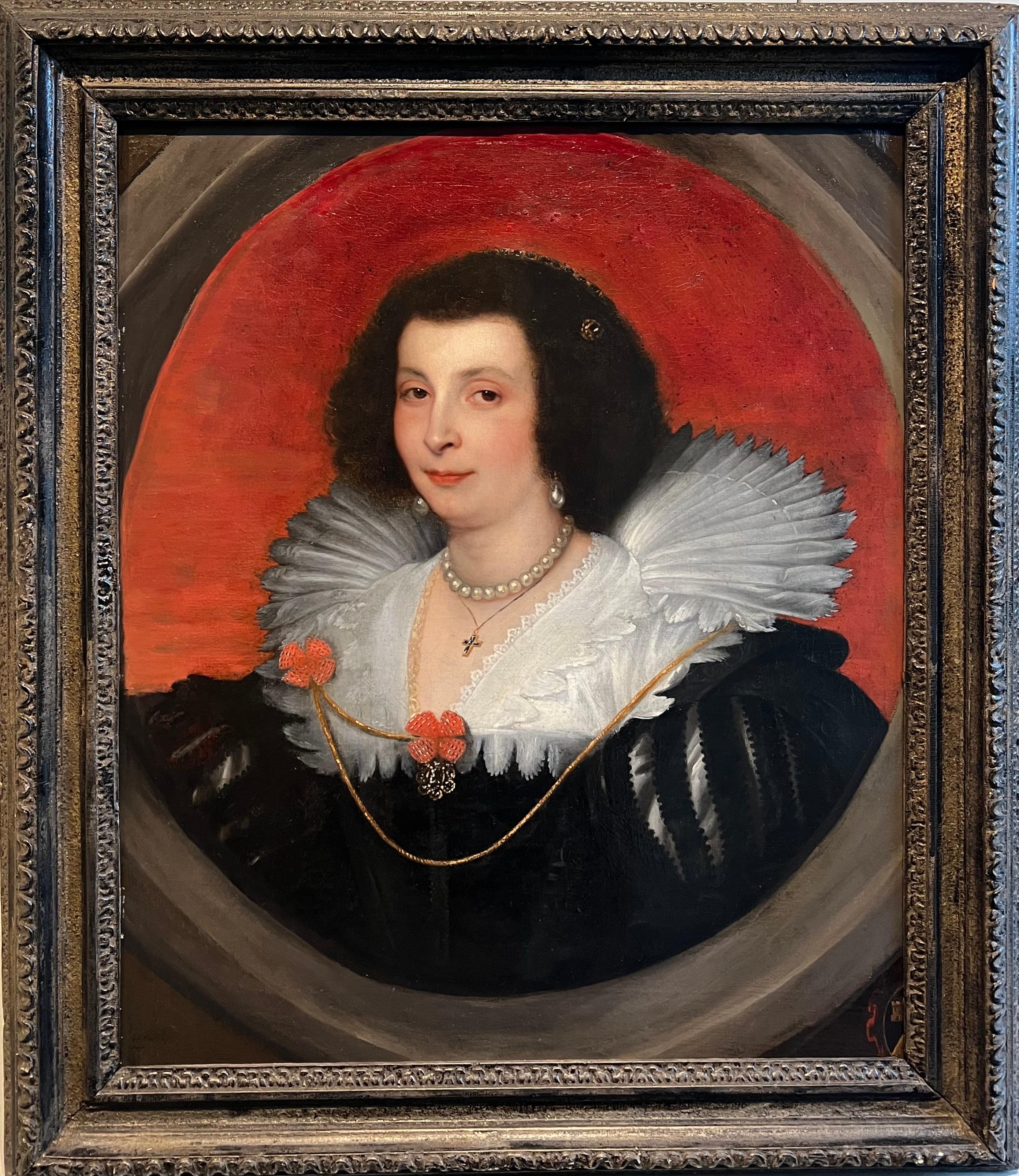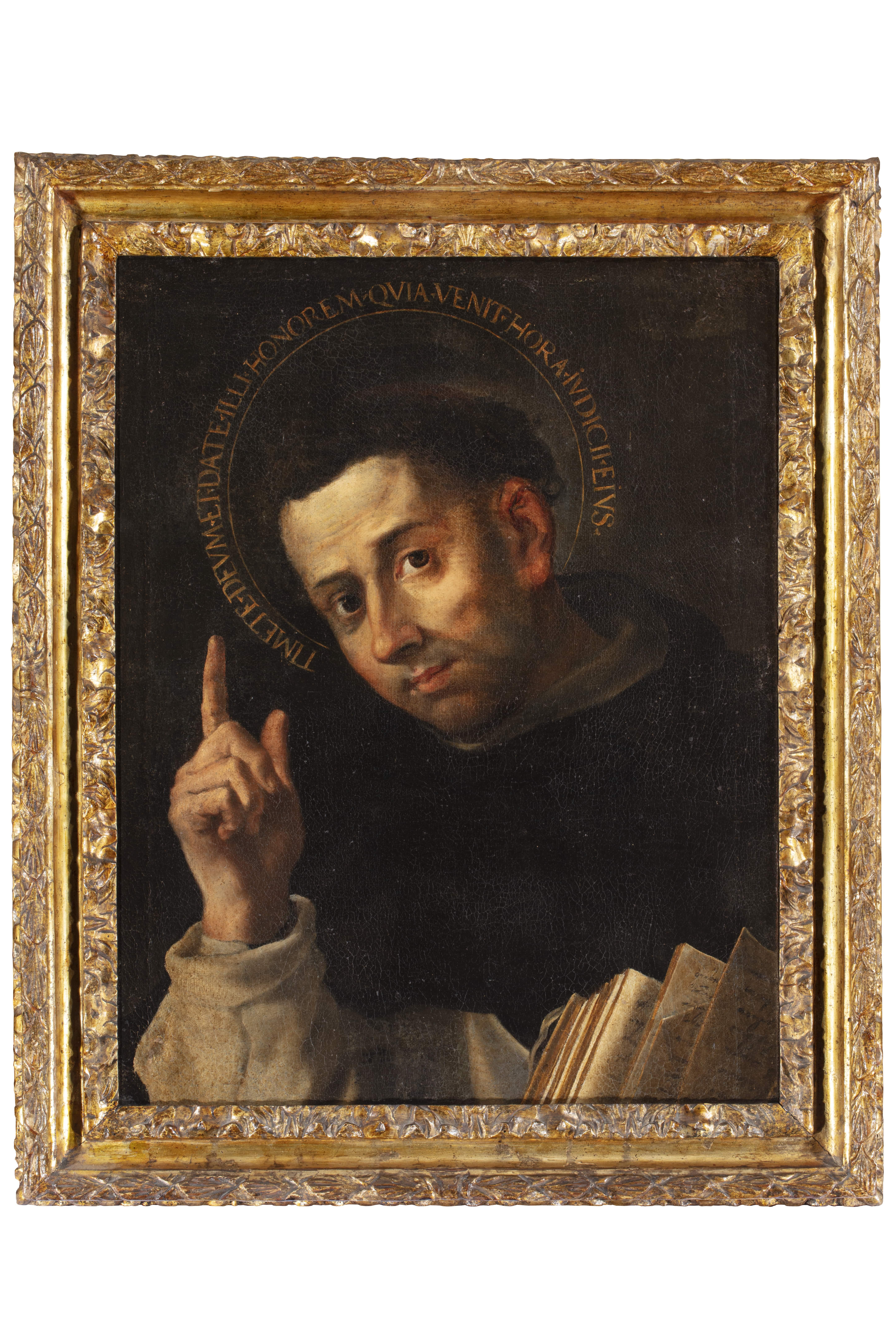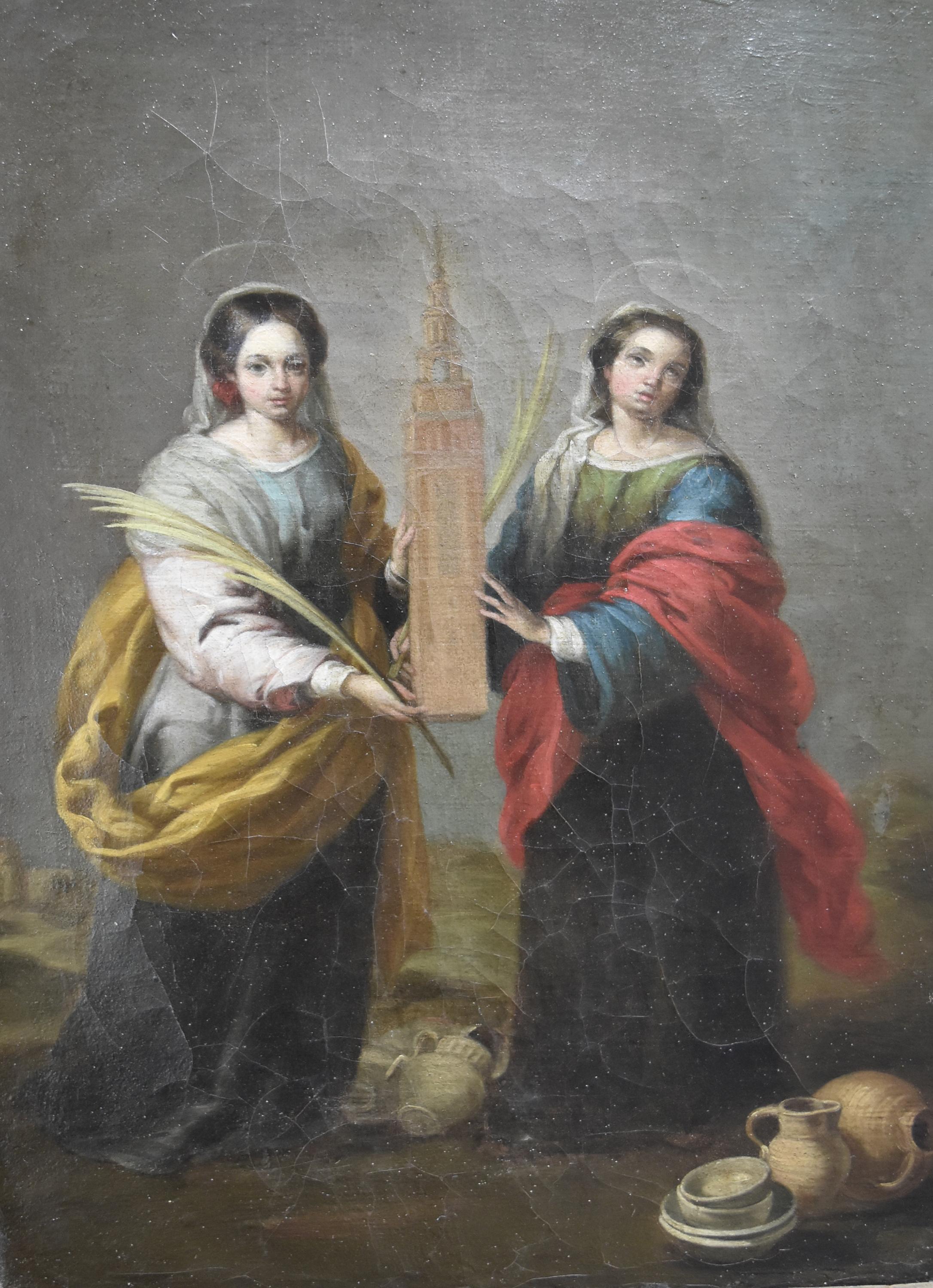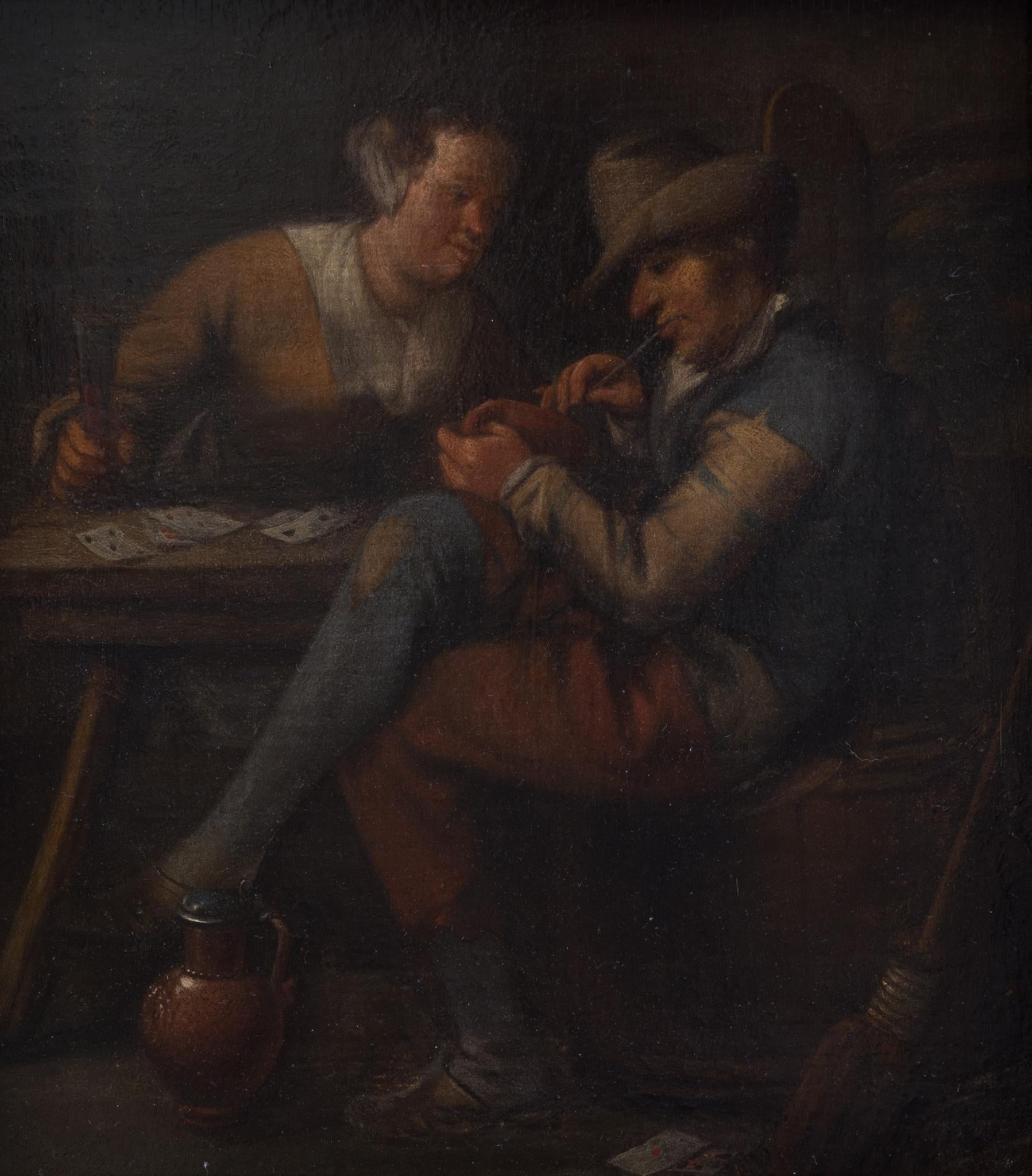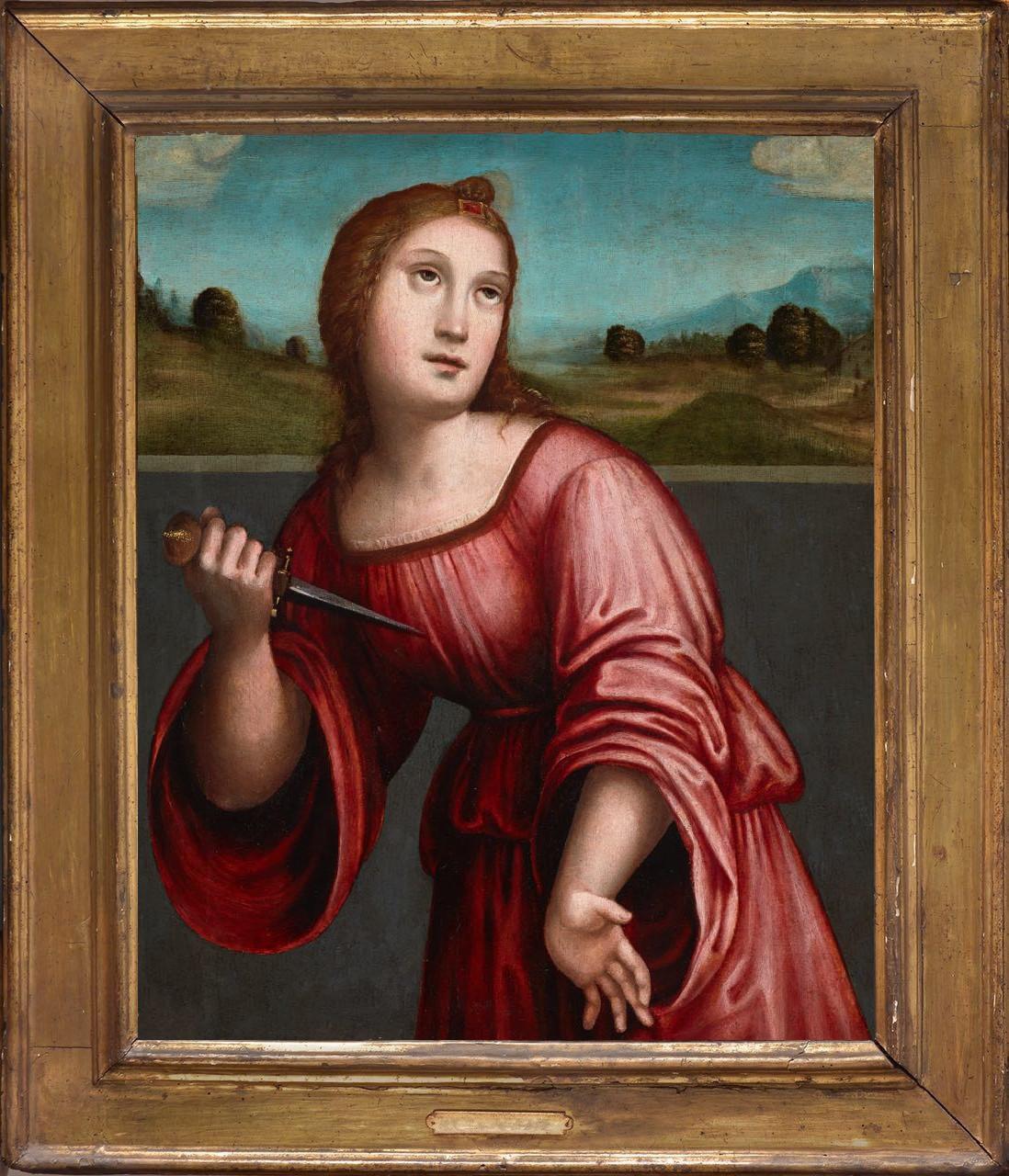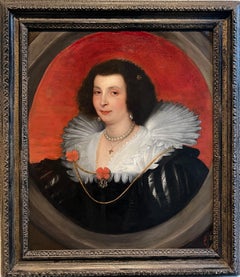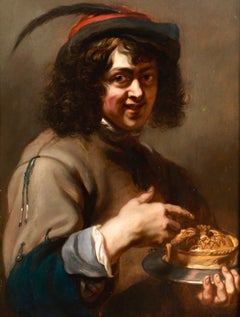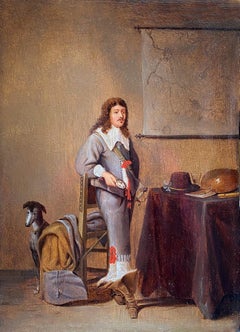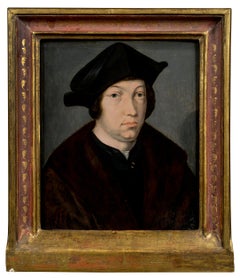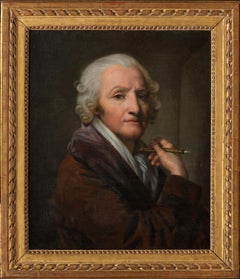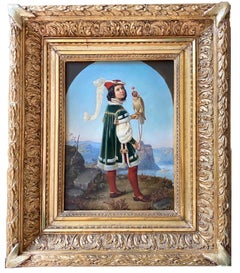
19th century German Nazarene painting - The young prince - Nazarener Von Schadow
View Similar Items
Want more images or videos?
Request additional images or videos from the seller
1 of 18
Wilhelm Nerenz19th century German Nazarene painting - The young prince - Nazarener Von Schadow1835
1835
About the Item
- Creator:Wilhelm Nerenz (1804-1871, German)
- Creation Year:1835
- Dimensions:Height: 9.45 in (24 cm)Width: 7.68 in (19.5 cm)
- Medium:
- Movement & Style:
- Period:
- Condition:Absolutely wonderful condition, no repairs at all. Ready to hang.
- Gallery Location:Antwerp, BE
- Reference Number:1stDibs: LU142326811092
About the Seller
5.0
Platinum Seller
These expertly vetted sellers are 1stDibs' most experienced sellers and are rated highest by our customers.
Established in 2020
1stDibs seller since 2020
348 sales on 1stDibs
Typical response time: 1 hour
More From This SellerView All
- 17th century Portrait of Anna Maria de Camiudo - Royal Court 1630 SpainBy Anthony van DyckLocated in Antwerp, BE17th century old master Portrait painting of Anna Maria De Camiudo Anna Maria de Camiudo was a Spanish noblewoman and daughter of Don Pedro Velasques de Camiudo and Dona Maria de l...Category
17th Century Old Masters Portrait Paintings
MaterialsCanvas, Oil, Board
- 17th century Flemish Old Master - A young boy enjoying a pie, allegory of tasteLocated in Antwerp, BE17th century Flemish old master painting, Allegory of taste The very fine painting depicts a young boy, cheekily tasting a delicious pie. He's looking at the viewer with eyes twinkl...Category
17th Century Old Masters Figurative Paintings
MaterialsCanvas, Oil
- 17th century Flemish old master painting - Adoration of the Shepherds ChristmasLocated in Antwerp, BE17th century Flemish Old master painting "Adoration of the Shepherds" by Victor Wolfvoet the Younger Surrounded by an elegant and broad black frame, i...Category
17th Century Old Masters Figurative Paintings
MaterialsCopper
- 18th century French Old Master Portrait of a woman - Female Oriental QueenLocated in Antwerp, BEFrench 18th century old master portrait of a majestic and elegant lady. The aristocratic lady gazes at the viewer with a kind and enigmatic smile and twinkling eyes. In comparison w...Category
1740s Old Masters Portrait Paintings
MaterialsOil, Canvas
- 18th century French Rococo Portrait painting of a noble lady - young ladyLocated in Antwerp, BE18th century French Rococo portrait of a young noble lady This cheerful young lady is looking at the spectator with a sparkling eyes has a cheeky smile on her face, almost as if she has just heard a funny story. She is very elegantly dressed, wearing a blue dress with embroidered silk sleeves. The bodice is adorned with a cream silk band which has been beautifully tied to a ribbon at the top, a tulle-lining completes the dress. Her hair is styled in an elaborate 18th century style and tied together with a blue and cream silk hairband. This portrait has been wonderfully painted, the artist not only beautifully depicted the fabrics, but also marvellously captured the happy nature of the sitter. The painting really has a soul, when one looks at it, it feels as if one is looking at a real person. It is very close to the works of Joseph-Siffred Duplessis (1725-1802) and it shares an uncanny resemblance to the portrait that he painted of the Comtesse de Provence, Princess of Savoie and wife of the King Louis XVIII of France. Duplessis is known to have reused many of his favoured compositions in different portraits, but he always applied slight differences, such as in the present painting. We believe that the present painting was created by someone from his very close circle. Joseph-Siffred Duplessis (1725-1802) was a renowned French portrait painter, famed for his intimately rendered portraits. After training for many years in Paris, Duplessis presented himself to the Académie in 1769 and was afforded the opportunity to exhibit regularly at the Salon. He was very successful and in 1777, he was allowed to paint a full-length portrait of Louis XVI (1754–1793) in his state robes. Two years later he created a portrait of Benjamin Franklin in a red coat with a fur collar, a painting which was the subject of much favorable comment. It was destined to become the artist’s most famous work and perhaps the best known image of the great American patriot...Category
18th Century Old Masters Portrait Paintings
MaterialsCanvas, Oil
- 17th century German portrait of a man - Wine merchant Caspar Roemerskirchen 1628Located in Antwerp, BE17th century German portrait of the wine merchant Caspar Roemerskirchen at the age of 26 in 1628, attributed to Gottfried de Wedig This highly decorative portrait depicts the 26 yea...Category
17th Century Old Masters Portrait Paintings
MaterialsOil, Wood
You May Also Like
- Soldier in an Interior, Early 17th Century Dutch OilLocated in London, GBPieter Symonsz Potter Dutch 1600 - 1652 Soldier in an Interior Oil on oak panel, red seal to reverse Image size: 15 x 10 3/4 inches Dutch Ebonised frame Bathed in a well lit roo...Category
Early 17th Century Old Masters Portrait Paintings
MaterialsOil, Board
- Portrait of a ManLocated in New York, NYProvenance: with Leo Blumenreich and Julius Böhler, Munich, 1924 Dr. Frederic Goldstein Oppenheimer (1881-1963), San Antonio, Texas; by whom given to: Abraham M. Adler, New York, un...Category
16th Century Old Masters Portrait Paintings
MaterialsOil, Panel
$52,500 - Portrait of Jean-Baptiste Greuze, painted on linen by his daughter Anna GreuzeLocated in PARIS, FRThis replica of the last self-portrait of Jean-Baptiste Greuze painted in 1804, executed by his daughter Anna at her father's side and recently rediscovered, provides us with a poignant image of the great artist, represented with panache despite the disillusions of life. 1. Jean-Baptiste Greuze Jean-Baptiste Greuze was the sixth child of a roofer from Tournus and retained a certain rusticity in his behaviour from his provincial childhood, beyond his taste for describing picturesque scenes of the countryside. He initially started training with a little-known painter from Lyon, Charles Grandon, before his genius was recognised in Paris where he became a full-time student of the Académie (of Painting) in 1755. He exhibited his work for the first time at the Salon during the summer of 1755, before leaving on a trip to Italy in the company of Louis Gougenot, abbot of Chezal-Benoît. Upon his return to Paris, Greuze became a prolific painter, participating widely in the Salons held between 1759 and 1765, to which he sent no less than 63 paintings: numerous genre scenes (The Marriage Contract, The Beloved Mother), but also portraits of his family circle, of courtiers and art lovers, or of his colleagues. The Academy closed the doors of the Salons to him in 1767 for not having produced his reception piece within six months of his reception, as was the tradition. He worked actively on this painting (Emperor Severus rebukes Caracalla, his son, for trying to assassinate him ) until the summer of 1769, tackling historical and mythological subjects for the first time. Once this was completed, he was then fully admitted to the Academy, but as a genre painter, and not as an historical painter, which had been one of the greatest humiliations of his life. Greuze then refused any participation in events organised by the Academy or its successor, the Academy of Fine Arts until 1800. Abandoning history painting, he gave a new twist to genre scenes, bringing them closer to history painting, as in this pair of canvases which constitutes some of his masterpieces: The Paternal Curse: The Ungrateful Son and The Paternal Curse: The Punished Son . Married in 1759 to Anne-Gabrielle Babuti, the daughter of a Parisian bookseller, his marriage was unhappy and his wife probably frequently unfaithful. The institution of divorce enabled him to record their separation in 1793, keeping his two daughters Anna-Geneviève, born in April 1762, and Louise-Gabrielle, born in May 1764, with him. Little is known about his daughter Anna except that she was herself a painter and lived with her father until his death. It is likely that most of the paintings she produced up to that date were attributed to her father, whose technique she shared to a great extent, making it extremely difficult to establish an autonomous corpus of her paintings. Greuze died in his studio at the Louvre on March 21st 1805. The attention paid to the expressivity of his characters and the emotional charge they convey enabled Jean-Baptiste Greuze to enjoy immense popularity with the eighteenth-century public, and they still constitute Greuze's true modernity. As the artist said, "I dipped my brush in my heart". Greuze was also an exceptional draughtsman and a portraitist of immense talent and exceptional longevity who painted both the Dauphin (the son of Louis XV and father to Louis XVI) and the young Napoleon Bonaparte. 2. Greuze's self-portraits Greuze was very much influenced by Dutch paintings during all his life. While the source of his inspiration for genre scenes can be found in Gerard Dou...Category
Early 1800s Old Masters Portrait Paintings
MaterialsLinen, Oil
- 17th century By Neapolitan maestro San Vincenzo Ferreri Oil on canvasLocated in Milano, Lombardia“Timete Deum et date Illi honorem quia venit hora iudicii Eius” (Fear the Lord and honour Him, for the hour of His judgement has come): the passage from John's Apocalypse (chapter 14...Category
17th Century Old Masters Portrait Paintings
MaterialsCanvas, Oil
- 16th Century by Bernardino Detti Face of Christ Oil on CanvasLocated in Milano, LombardiaDimensions: 41 x 32 cm without frame - 47 x 55.5 cm with frame Antique box frame made of solid wood and walnut burl. Publications: unpublished The painting by Bernardino Detti (14...Category
16th Century Old Masters Figurative Paintings
MaterialsCanvas, Oil
- Spanish School 19th century, Santa Justa and Santa Rufina, oil on canvasLocated in Paris, FRSpanish School of the 19th Century Santa Justa and Santa Rufina Oil on canvas 40 x 27 cm In quite good condition, the paint surface presents numerous crack...Category
1840s Old Masters Figurative Paintings
MaterialsOil
$1,428 Sale Price25% Off
Recently Viewed
View AllMore Ways To Browse
Cafe Society
Georgian Portrait Oil Paintings
Hope Charm
The Age Of Innocence
Vintage Beauty Salon
Antique Greek Painting
Drift Wood
Jeanne Frame
1980s Oil On Board
German Propaganda
Art And Musical Instrument And Painting
Library Interior Oil Painting
Vintage Jon Jon
Oil Painting Spheres
Set Of 6 Illustration
Men Costume
Costume Men
Judaica Oil

